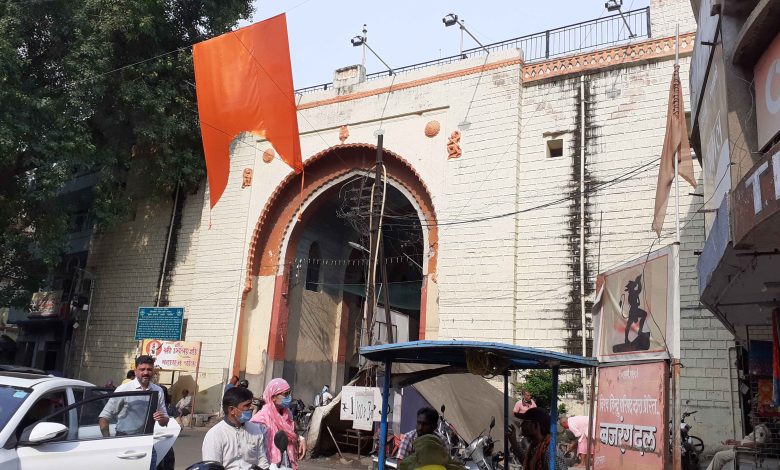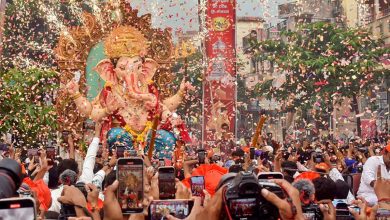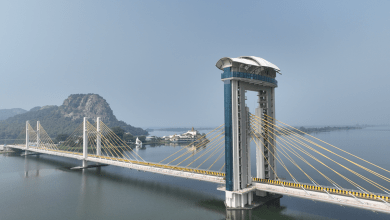NMC Launches Heritage Revival Plan to Restore Gandhi Gate in Mahal, Nagpur

A New Dawn for an Ancient Gateway
In a significant step toward reviving Nagpur’s historical legacy, the Nagpur Municipal Corporation (NMC) has announced a comprehensive restoration and conservation plan for Gandhi Gate, also known as Jumma Darwaza. Located in the heart of Mahal, this centuries-old Mughal-era structure is one of the last surviving symbols of the city’s pre-colonial glory and its deep connection with India’s First War of Independence.
This initiative, spearheaded by Municipal Commissioner Abhijeet Chaudhari, is not merely about preserving a stone structure — it’s about resurrecting memory, identity, and pride for a city that is evolving rapidly into a smart urban center.
Historical Roots of Gandhi Gate: From Royal Entrance to Revolutionary Landmark
Built by Chand Sultan, Son of Gond King Bakht Buland Shah
The history of Gandhi Gate dates back to the early 18th century, built by Chand Sultan, a royal descendant of the Gond dynasty, soon after Raghuji Maharaj-I declared Nagpur as the capital in 1735. The gateway once stood as part of a magnificent palace complex that stretched from Kotwali police station to DD Nagar Vidyalaya, housing royal residences, temples, and administrative halls.
Survivor of 1818 British Invasion
In 1818, during the British annexation of the region, a devastating fire — believed to have raged for six months — destroyed much of the structure. Yet, Gandhi Gate withstood the carnage, standing tall as the last sentinel of the Gond-Maratha era.
The Forgotten Martyrs of 1857: A Gateway Stained with Sacrifice
Site of Execution During the 1857 Revolt
The Gandhi Gate’s most poignant historical moment came during the First War of Independence in 1857. As the uprising surged across India, the British forces in Nagpur captured and executed nine brave revolutionaries at this very site. Their names echo through history:
-
Nawab Qadir Khan
-
Siddiq Ali Khan
-
Akbar Ali Khan
-
Vilayat Ali Khan
-
Bunyad Ali Risaldar
-
Yusuf Khan
-
Uniform Major
-
Moinuddin Husain Jamadar
-
Inayatullah Khan
-
Maratha patriot Waghle Jamadar
Their bodies were left hanging from the gate for three days, a brutal colonial tactic meant to deter further rebellion. Today, their legacy rests at the Nine Gazi Memorial on Sitabuldi Hill — a name too few in Nagpur remember.
The Restoration Vision: Blending Conservation with Civic Pride
Led by a Dedicated Team and Technical Experts
The NMC, under Commissioner Abhijeet Chaudhari’s leadership, is inviting Project Management Consultants (PMCs) who specialize in heritage conservation to take charge of the initiative. As confirmed by Executive Engineer Ashwini Yelchatwar, the scope of work includes:
-
Creating a Detailed Project Report (DPR)
-
Conducting structural assessments
-
Developing architectural redesigns
-
Implementing site-specific conservation techniques
A pre-bid meeting and subsequent technical evaluations will determine the final consultant, following which the project budget will be finalized.
Gandhi Gate in Present Day: Neglect Amid Narrow Lanes
Today, Gandhi Gate lies buried under urban neglect. Surrounded by vibrant commercial lanes, historic wadas (stone homes), old temples, and colonial-era schools, the monument is encroached upon, obscured by the hustle of daily life.
Yet, its stone arches and aged bricks whisper tales of royal dynasties, architectural grandeur, and revolutionary bravery. The NMC’s plan is to not only restore the structure physically but also reintegrate its stories into public consciousness.
“This is about reintroducing Nagpurians to their own history — stories that never made it to school textbooks,” said Yelchatwar.
Key Objectives of the Restoration Project
1. Physical Conservation of Gandhi Gate
-
Cleaning, stabilizing, and restoring stonework
-
Preserving original design elements with historical accuracy
-
Removing modern encroachments that damage the heritage site
2. Urban Redesign and Cultural Integration
-
Enhancing the surrounding streetscape to reflect the gate’s historic importance
-
Creating informational plaques and QR-code guided tours
-
Possibly including a heritage walk route in the Mahal area
3. Reviving Public Memory
-
Installing interpretive panels detailing the 1857 executions
-
Honoring the Nine Gazi Martyrs in the context of India’s freedom struggle
-
Organizing local awareness campaigns, exhibitions, and student outreach programs
Why Gandhi Gate Matters Today
In a city rapidly transforming into a modern Smart City, there’s a growing urgency to protect the few remaining heritage markers that link present-day Nagpur to its glorious and often painful past. Gandhi Gate is not just a relic; it is a symbol of resistance, continuity, and forgotten courage.
Restoring Gandhi Gate is more than a construction project — it’s a cultural mission to ensure that every Nagpurian, young or old, understands and cherishes the legacy beneath their feet.
A Monument Worth Remembering, A History Worth Preserving
As the NMC sets the wheels in motion to breathe new life into Gandhi Gate, Nagpur stands at a historic crossroads. Will it embrace its identity as a city rich in heritage and rebellion? With public support and expert execution, the Gandhi Gate restoration can be a defining milestone in how cities remember, honor, and preserve their soul.
We look forward to seeing Gandhi Gate once again become a beacon — not just of stone and mortar, but of memory, martyrdom, and pride.









